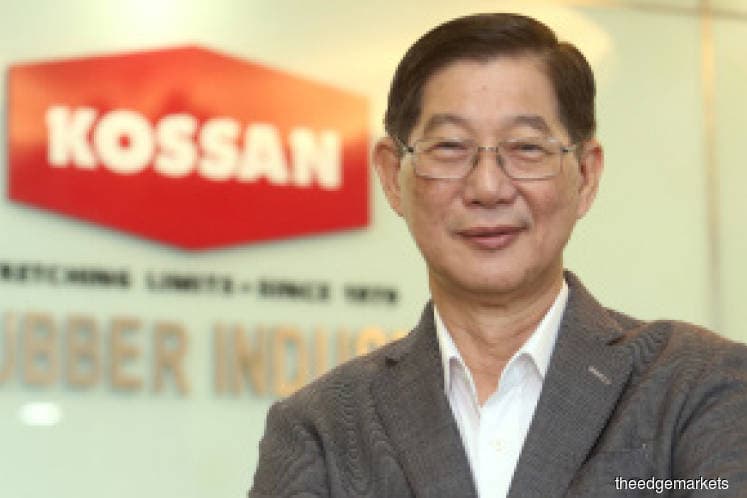
This article first appeared in The Edge Financial Daily on May 6, 2019
KLANG: After another year of steady growth on both the top and bottom lines, Kossan Rubber Industries Bhd is looking forward to even better results. The glove manufacturer targets to maintain a double-digit growth for both net profit and revenue this year.
Net profit has been improving in the past couple of years. For the financial year ended Dec 31, 2018 (FY18), it rose 10% to RM200.78 million versus RM182.06 million in FY17.
This was supported by higher revenue which also rose 10% year-on-year to RM2.14 billion — the highest ever for the group — from RM1.96 billion. The group’s revenue has been on a steady uptrend over the last five years (see chart).
Group managing director and chief executive officer Tan Sri Lim Kuang Sia, who is also founder and majority shareholder of the group, attributed the full-year performance and growth over the years to higher demand for gloves worldwide.
It was also achieved despite an increase of 22.8% and 9.3% respectively in natural gas and nitrile prices during FY18, as well as the less favourable exchange rate when the US dollar depreciated against the ringgit, he said.
Although there continues to be some pressure on prices in the market, Lim is undeterred and expresses confidence in the group’s prospects.
“My way of doing business is always about ensuring stability and steady long-term growth. We are very particular in risk management. Even when it comes to expansion we do it in stages, we do not want to end up with cash flow issues. Whatever it is, we will continue to make a profit. This year will be better than previously,” Lim told The Edge Financial Daily in an interview.
The optimism is premised on the group’s expansion plan for the next few years, which includes two plants (dubbed Plant 18 and 19) here, as well as the coming development of a recently acquired 824 acres (333.5ha) in Bidor, Perak.
“Construction of Plant 18 and 19 are progressing well. We expect them to be completed in the third quarter and fourth quarter of 2019 respectively,” said Lim.
As a result of capacity expansion, the group has spent more to support the growth.
“Our gearing, however, has remained manageable at a current 0.2 times. It is typically 0.1, though we will see it return to such level after expansion eases,” he said.
With the group’s existing other plants, the total annual production capacity stands at 26.5 billion pieces of gloves. The addition of Plant 18 and 19 will add on another 5.5 billion pieces per annum, bringing the group’s total installed capacity to 32 billion pieces of gloves by end-FY19.
With the newer plants, the group is targeting to further improve the efficiency level to 1.5 workers per million gloves in the long term (from the current level of slightly below three workers per million gloves).
Kossan’s business activities are divided into technical rubber products, gloves and cleanroom products segments.
Gloves, which contribute the most to revenue, are mainly exported to the developed markets of the US, eurozone and Asia-Pacific. The nitrile to natural rubber volume split was 75:25 in FY18.
Lim said the group continuously looks for new markets as part of its strategy to sustain growth momentum. However, of higher priority now is to look for ways to increase its bottom line figures as well.
“It’s about increasing savings. Raw material prices are more or less the same. Packaging costs are also standard. Electric and gas costs are also something we cannot control, so with increased tariffs or not, we will have to make do as with everybody else,” he said.
Though to ease this burden, Lim said the group can look at ways of cutting down usage.
“So the factors that we could try to change are labour costs, gas and electric usage as well as other expenses. We are trying to use less manpower and less utilities if possible to reduce costs,” he explained.
To reduce manpower, Lim said the group is continuously working on increasing the level of automation in its production lines. Kossan has embarked on an automation transformation, introducing robotic implementations in its plants. It hopes to complete the programme by 2020.
“We recognise that we cannot depend on too many foreign workers. Foreign workers make up about 70% of our workforce.
“But I am trying to lower our dependence to less than 30% in the future. By hook or by crook we will need to lessen the number of foreign workers. Automation will help us be more efficient and save money on having to pay for labour,” he said.